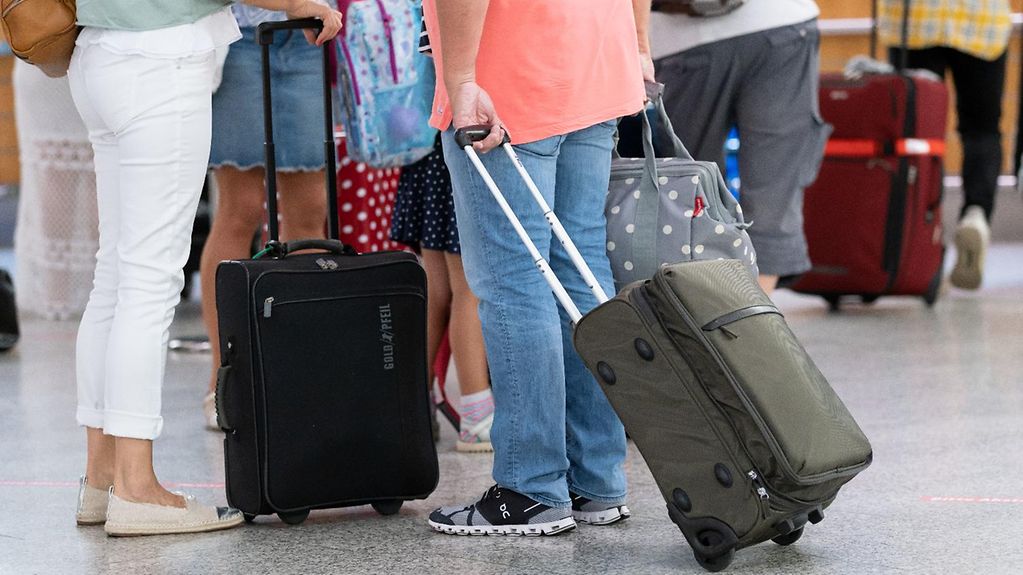Cabinet decision
Because of the high level of new infections – caused at least partly by returning travellers – the German government is extending its travel warning for "third states" up to and including 14 September. The Cabinet has taken this decision.
2 min reading time

Travellers should check the latest travel warnings issued by the Federal Foreign Office before leaving the country on holiday.
Photo: picture alliance/dpa/Frank Rumpenhorst
The travel warning for non-essential tourist travel to other countries, with the exception of the member states of the European Union, the non-EU member states which are part of the Schengen Area and the United Kingdom, will remain in place until 14 September 2020. In June the German government decided to issue the travel warning for third states, initially until 31 August.
The warning has now been extended because of the continued dynamic development of the COVID-19 pandemic around the world. According to the Robert Koch Institute, a large number of the new infections in Germany is currently accounted for by travellers returning from high-risk areas. The majority of infections, however, are still caused by community transmission inside Germany.
COVID-19 travel warnings
An unusually large number of travel warnings are currently being issued, related to the pandemic. High infection rates mean that travel warnings are even in place for some countries or regions inside the EU. Travel warnings indicate the Federal Foreign Office strongly advises against travel to a country or to a specific part of a country. Travel warnings are only issued when there is a need to warn people that travelling to a country or to a specific part of a country will entail an acute threat to life and limb.
An area covered by a travel warning is not necessarily a COVID-19 high-risk area. COVID-19 high-risk areas are areas in which there is a higher risk of becoming infected with SARS-CoV-2. Although the pandemic plays a part in both the issuing of a travel warning and the classification as a high-risk area, the travel warning considers the general overall risk posed to travellers. This includes, for instance, travel restrictions and quarantine regulations in the country in question, return travel options and the state of the country’s health system. Read more FAQs on travel warnings and high-risk areas.
Quarantine measures and mandatory testing
Anyone arriving in Germany from a high-risk area must quarantine and inform the local health office (Gesundheitsamt). Since 8 August, every person arriving from a high-risk area has been required either to provide evidence that they have tested negative for COVID-19 and that the test was conducted less than 48 hours before travelling, or to take a COVID-19 test within 72 hours of their arrival in Germany. If the test is negative, they will no longer be required to quarantine.
In addition, all returning travellers have the opportunity to take a free coronavirus test within 72 hours of their return to Germany – irrespective of where they are travelling from or of whether or not they display symptoms. You will find more FAQs for returning travellers here.
You can find the current travel warnings issued by the Federal Foreign Office here. The Robert Koch Institute also offers a regularly updated list of countries where there is a higher risk of becoming infected with SARS-CoV-2.